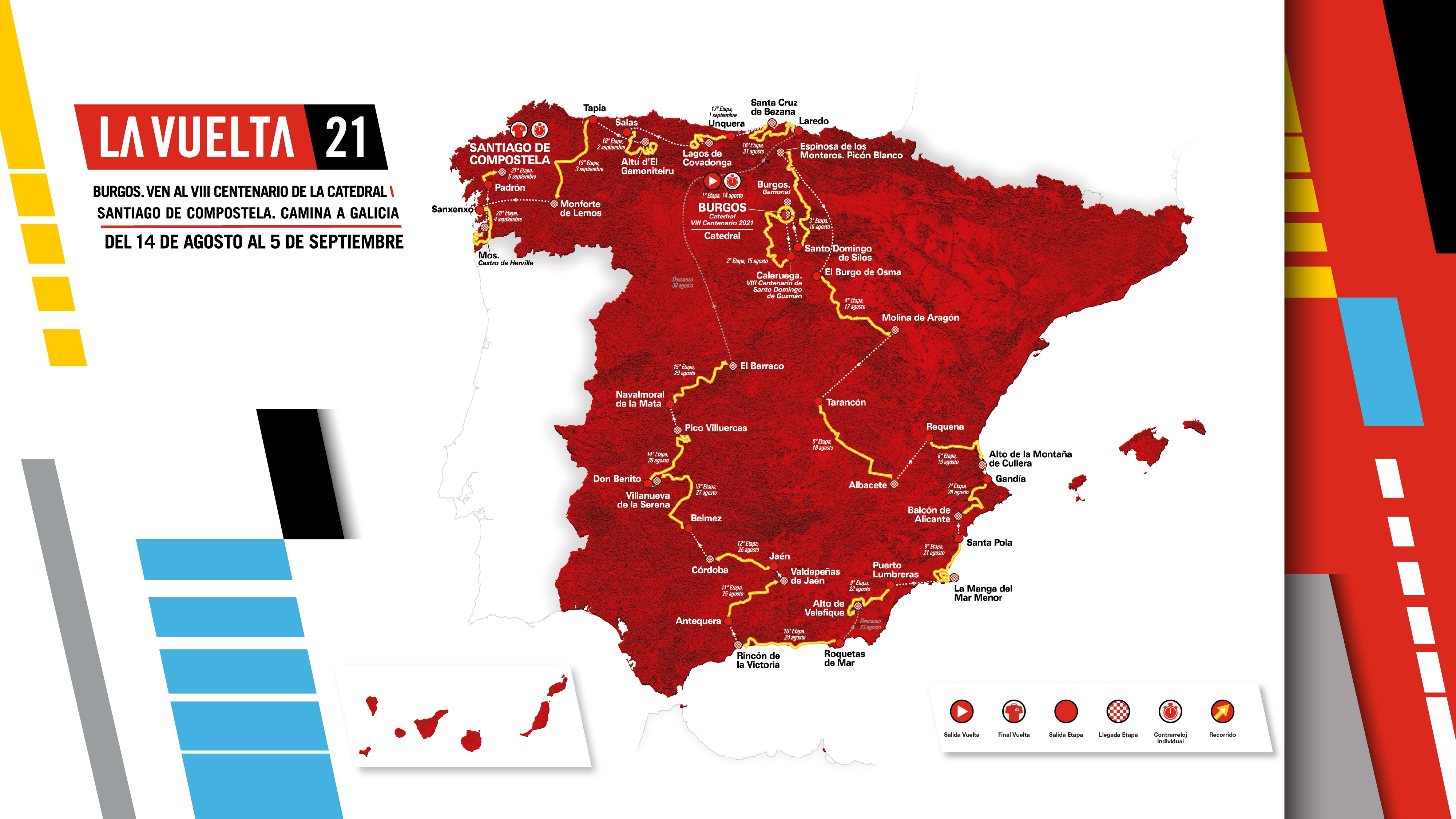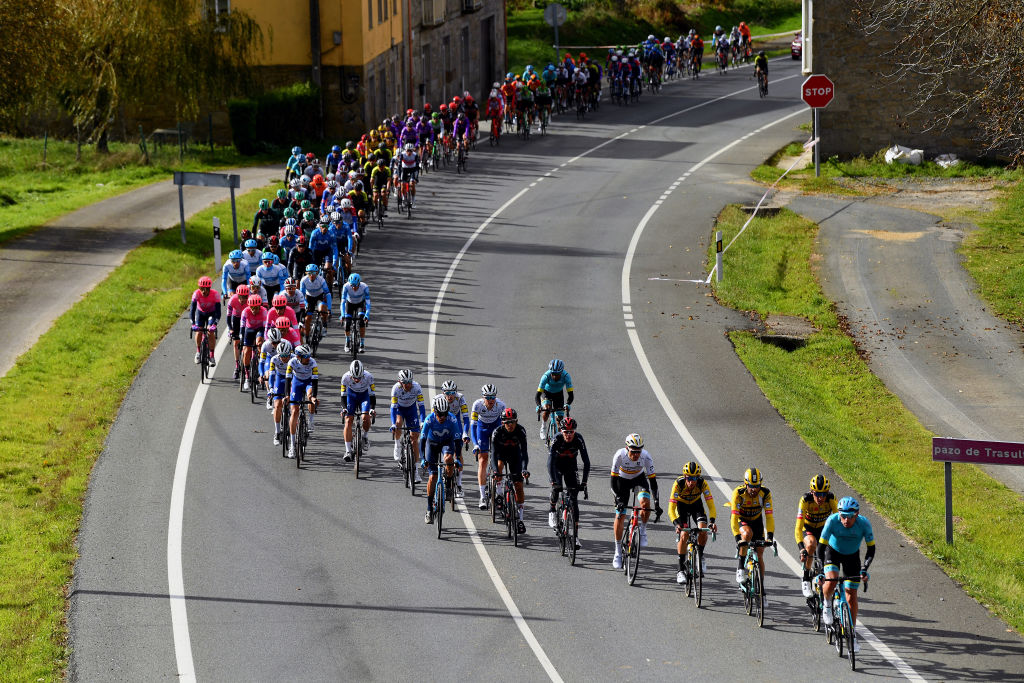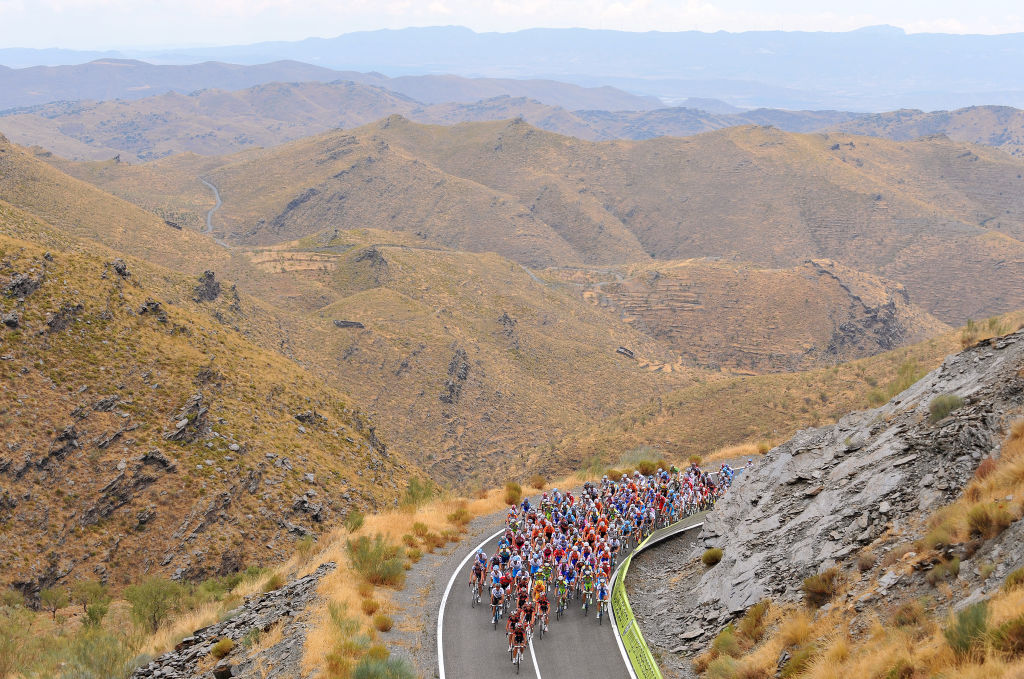Five key stages of the 2021 Vuelta a España
Race co-designer and former pro Fernando Escartín lifts the lid on Vuelta route

Fernando Escartín, a top climber in the 1990s, began work as a co-designer of the Vuelta a España routes after retiring in 2002. He revealed to Cyclingnews what he views as the five key stages of the 2021 edition of Spain's three-week Grand Tour.
A last blast from the past: Stage 21: Padrón - Santiago de Compostela: Individual time trial, 33.7km
In 1993, Escartín was a key wingman in the Clas-Cajastur team for Vuelta a España race leader Tony Rominger, in a year when the Vuelta also finished with a time trial in Galicia. The coincidences don't stop there: the 1993 Vuelta's final time trial began in Padrón, the same start town as this year's crono, and also finished in the region's capital, Santiago de Compostela.
"The 2021 time trial course uses almost all the same roads as in 1993," Escartín, tenth overall in that year's race, tells Cyclingnews, "although back then it was a bit longer." [44.6 kilometres - Ed.]
"I remember it very well, not only because I was rooming with Tony, but also because the poor guy got really ill the night before with a stomach bug and he was so weak we were scared he could lose the race.
"It's very similar to 1993, with a short climb early on, a drop down and then a long draggy uphill into Santiago. It's a route which suits power racers, not at all technical apart from the last part, which is inside the city. That last part is a bit different to 1993 when we finished on a climb in a new part of Santiago, not outside the cathedral as it will this year."
The other factor that could toughen up the time trial is the weather: Galicia is famous for being an exceptionally rainy part of Spain, "and the rain really changed things in 2014 when we had a much shorter final time trial in the same city," Escartín says.
Rominger took second on the stage in 1993 behind his big rival Alex Zülle, but the winning margin between the two Swiss riders overall was less than 30 seconds. Escartín is convinced that the 2021 Vuelta could well end up being as close as that, too. "If you look at mountain stages recently, the time differences between the top two to four names are minimal, so the whole race could end up being decided on that last day. That's what we're hoping anyway!"
Get The Leadout Newsletter
The latest race content, interviews, features, reviews and expert buying guides, direct to your inbox!
Asturias' new monster climb: Stage 17: Salas - Alto de Gamoniteiro, 159.2 km
The last major summit finish of the 2021 Vuelta, and arguably the toughest single final climb of the race, the Gamoniteiro has never been used before. Given the climb's difficulty, the fact they will be deep into the third week with energy levels veering close towards empty, and the fact that most riders won't know what they're facing, stage 17 will be one of the most daunting of the entire Vuelta.
At 15 kilometres in length and averaging between 10 and 12 per cent gradients for most of that, "it's the last big opportunity for the climbers to take time before that final time trial, and if they're feeling strong, this is a brilliant opportunity," Escartín argues. "The flip side being that any rider feeling weak on a climb that long, and with such tough slopes, could lose a huge amount of time."
The first part of the Gamoniteiro will at least be familiar as it forms part of the Puerto de la Cobertoria, a much-used climb in the Vuelta and other races. While the Angliru is part of the same mountain range, "it's not as steep as the hardest part of the Angliru, which rises to 22 per cent on the worst segments like the Cueva de las Cabras.
"The Gamoniteiro's hardest ramps are maybe 16 per cent or 17 per cent at most, but what makes it so hard is it's just constantly steep. And it's much harder at the foot of the climb than the Angliru, with a few sections of cement as well.
"Like every Asturian climb, the road is narrow and twisting. Although by the time we reach the top there will be so few riders in the front that shouldn't be a problem."
Making it even harder is the fact that the Gamoniteiro is preceded by the Vuelta's 22nd ascent of the mythical Lagos de Covadonga climb 24 hours before. "That's one of the Vuelta's most important stages, too. I think the Lagos has so much of a historical connection with the Vuelta, there will probably more fans on that climb than on the Gamoniteiro."
When the wind blows: Stage 5: Tarancón - Albacete, 184.4km

"Whenever we race to Albacete, something happens in the Vuelta," Escartín points out. Although some of the 21 previous stages finishing in the city, set right in the middle of the windswept central plain of Castilla-La Mancha, have ended in bunch sprints, others have seen the peloton ripped apart in crosswinds on the region's exposed, flat roads.
"We haven't been to Albacete for a pretty long while" - the last time was in 2014 when Nacer Bouhanni claimed the win - "so the Vuelta has a kind of debt to pay there," Escartin explains.
"But if I was a rider, not an organiser, I'd be pretty nervous because the psychological tension you feel on a day like that is far more draining than the tiredness you feel after a big mountain stage."
Escartin says that the 2021 route into Albacete, from the northern side, has been specifically designed to give every chance for echelons to form. "We've been deliberately nasty", he says with a laugh, "but that's what every race organiser does."
"It's much harder than it used to be for echelons to form because teams race more as single units now, all grouped together, so we've done our best in the route design to catch them out.
"There's a big corner with about 20 kilometres to go that could prove the detonation point, and then it's dead straight all the way into Albacete. Hopefully, that should help the race get caught in the cross-tailwinds you tend to get in that area because those are the best for echelons.
"The problem for the riders is that when you're nervous on a stage like that, all you need is a bit of a breeze for the whole bunch to get lined out, almost without anybody wanting that to happen."
Escartín knows all too well what it feels like to be on the wrong side of a split. As he ruefully recalls, "I got caught out there in 1996 in the Vuelta, but that wasn't the only time. Whenever it was windy, just at the wrong moment, I always seemed to be right at the back of the bunch."
An early ambush? Stage 14: Don Benito - Pico Villuercas, 159.7km
"This stage isn't just about the final climb, which is tough enough in itself," Escartín warns. "What makes it even harder is a very tough little climb about 60 kilometres out, the Alto Collado de Ballesteros."
"It's only three kilometres long but we've ranked it first category because it's a cement track from start to finish and the average gradient is mostly between 15 and 20 per cent."
The Collado de Ballesteros is just one way of going up the last climb of that day's racing, the first category Pico Villuercas, but it is not tackled on the final ascent. However, Escartín believes that "if somebody's strong enough to go on a long-distance attack, they could blow the entire race apart."
The route lends itself to that kind of surprise move because "You get over the top of the Collado de Ballesteros, then you drop down the same road that the race comes back up later, do a loop on really narrow, technical roads, then head back up again. It'll be hard to organise a chase.
As for the final Pico Villuercas, "it's hard but not exceptionally so because it's got quite a few downhill sections. But it's still 14 kilometres long and if you're not on a good day, you can lose a lot of time."
Way down south: Stage 9: Puerto Lumbreras - Alto de Velefique, 187.8km

If the Gamoniteiro is the toughest single climb of the 2021 Vuelta, the race's hardest stage is almost certainly ten days earlier and 1,000 kilometres further south, in the sierras and semi-desert of Almería in southern Spain.
Last tackled in the 2009 Vuelta a España, the Velefique and the other climbs of that day do not have much in common with Asturias' poorly surfaced, narrow ascents and impossibly steep gradients. What makes stage 10 so tough is the sheer quantity of climbing, with one ascent, the Collado Venta Luisa, officially 21 kilometres but actually rising for nearly 40 kilometres - all this on exposed roads running through some of the emptiest and bleakest drylands of Spain's interior — the area is famous for being used for filming Clint Eastwood's spaghetti westerns in the 1960s - and in temperatures which in Andalusia in summer can easily max out at well over 40 degrees.
"The Venta Luisa is actually the other side of the ascent to Calar Alto" - where Miguel Angel Lopez won in 2017 on a day of freak thunderstorms and rain - "which is another horribly difficult climb," says Escartín. "And when you come off the Venta Luisa, there's no time to rest, because there's a draggy third category straight afterwards, the Filabres and then, after another long drop down, you're onto the Velefique itself."
"The heat plus 4,500 metres of vertical - that's going to be very hard. There's always the risk of strong winds in that area on exposed roads, as well.
"The landscape is so empty that all the time you're climbing on one switchback after another, you can see the top of the ascent, and that's hugely demoralizing.
"But it's where the GC favourites will probably start to shake the tree a little to see what they can do overall. It's going to be a big day."
Alasdair Fotheringham has been reporting on cycling since 1991. He has covered every Tour de France since 1992 bar one, as well as numerous other bike races of all shapes and sizes, ranging from the Olympic Games in 2008 to the now sadly defunct Subida a Urkiola hill climb in Spain. As well as working for Cyclingnews, he has also written for The Independent, The Guardian, ProCycling, The Express and Reuters.
